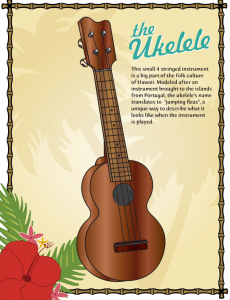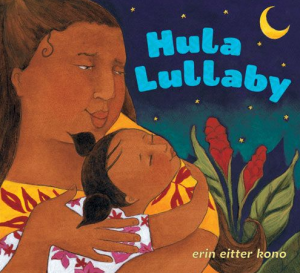 Can’t make it to the beautiful island of Hawaii this summer?
Can’t make it to the beautiful island of Hawaii this summer?
No worries – here are some fun and easy ways to have a Hawaiian-themed musical play-vacation with your kids!
Make Some Pu’ili Sticks!
There are many different kinds of Hawaiian hula dances. One form of hula uses bamboo rhythm sticks (below right); called pu’ili, that are tapped together by the dancers to make interesting beats. And the sticks are not just tapped together in front of the dancers – use can use them as a part of some terrific music and movement activities.
 Making your own pu’ili sticks from paper towel rolls – much easier then finding and cutting bamboo – can be the basis of some wonderful percussion play with your child! Find the step by step directions plus movement suggestions in the resource list below.
Making your own pu’ili sticks from paper towel rolls – much easier then finding and cutting bamboo – can be the basis of some wonderful percussion play with your child! Find the step by step directions plus movement suggestions in the resource list below.
Sticks and Stones!
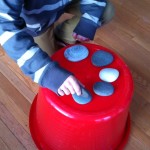 Hula dancers also tap together smooth stones as part of their percussion fun. They play them in a way that is similar to Spanish castanets! Even if you can’t tap these stones together like talented dancers, you can use river rocks make up rhythms as a part of natural musical play.
Hula dancers also tap together smooth stones as part of their percussion fun. They play them in a way that is similar to Spanish castanets! Even if you can’t tap these stones together like talented dancers, you can use river rocks make up rhythms as a part of natural musical play.
A Ukulele and You!
A uke is a great first stringed instrument for a child. It’s small size and easy chord positions mean that your little one can be playing easy songs within the first few hours of instruction.
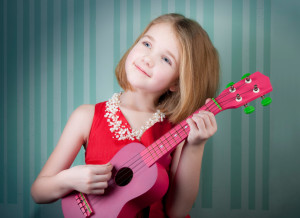 And what about you? Learning an instrument with your child is a great way to show your child how acquiring a new skill requires patience and practice – even for grown-ups! And it sets the stage for wonderful bonding. If your child is better at the uke, let them play and you clap out the beat or sing the words. Or trade places and see what happens. This is a fun way to make music a part of your everyday learning and enrichment.
And what about you? Learning an instrument with your child is a great way to show your child how acquiring a new skill requires patience and practice – even for grown-ups! And it sets the stage for wonderful bonding. If your child is better at the uke, let them play and you clap out the beat or sing the words. Or trade places and see what happens. This is a fun way to make music a part of your everyday learning and enrichment.
Lilo and Stitch
Aside from the exotic Hawaiian setting of this animated Disney Classic, we love the bonus features on the DVD that share more about Hawaiian music, hula and musical instruments like the gourd ipu.
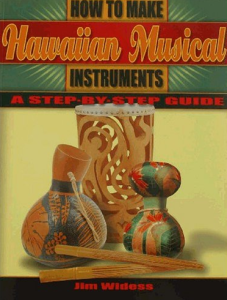 Serious Crafting – Hawaiian Style
Serious Crafting – Hawaiian Style
If you’re a serious crafter and got inspired by gourd instruments from Hawaii, this book offers fantastic instructions on making both the simple and the more complex Hawaiian instruments, including lots of percussion that can be enjoyed with any type of music.
Not up for crafting? There’s a link below where you can browse and purchase real musical gourds from a Hawaiian family-owned business that grows and makes their own.
Hawaiian Lullabye
Last of all, you might want to nod off to sleep with this beautifully illustrated book that will lull everyone to sleep with an island lullabye. A Hula Lullabye is a great way to end an exciting day of play!
All About The Pu’ili – Blog Post
http://www.tinytappingtoes.com/classroom-music/make-your-own-puili-hawaiian-rhythm-sticks/
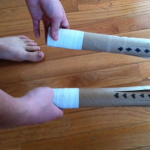 Pu’ili Instruction PDF from TPT
Pu’ili Instruction PDF from TPT
https://www.teacherspayteachers.com/Product/Make-Your-Own-Puili-Hawaiian-Rhythm-Sticks-1205139
Playing River Rocks As An Instrument – Hawaiian `ili`ile
Ukulele Coloring Page
http://www.dariamusic.com/docs/Ukelele%20BW%20Coloring%20Page.pdf
Hawaiian music on Multicultural Kids Music Vids http://multikidsmusicvids.com/?cat=79
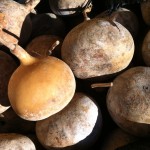 Authentic Hawaiian Hula Gourds
Authentic Hawaiian Hula Gourds
http://www.ipufarm.com/
How To Make Hawaiian Musical Instruments – Book Review
https://makingmulticulturalmusic.wordpress.com/2014/11/03/the-ultimate-make-your-own-hawaiian-instruments-book/
Hula Lullabye Book Review
http://favoritemulticulturalbooks.com/?p=2140

